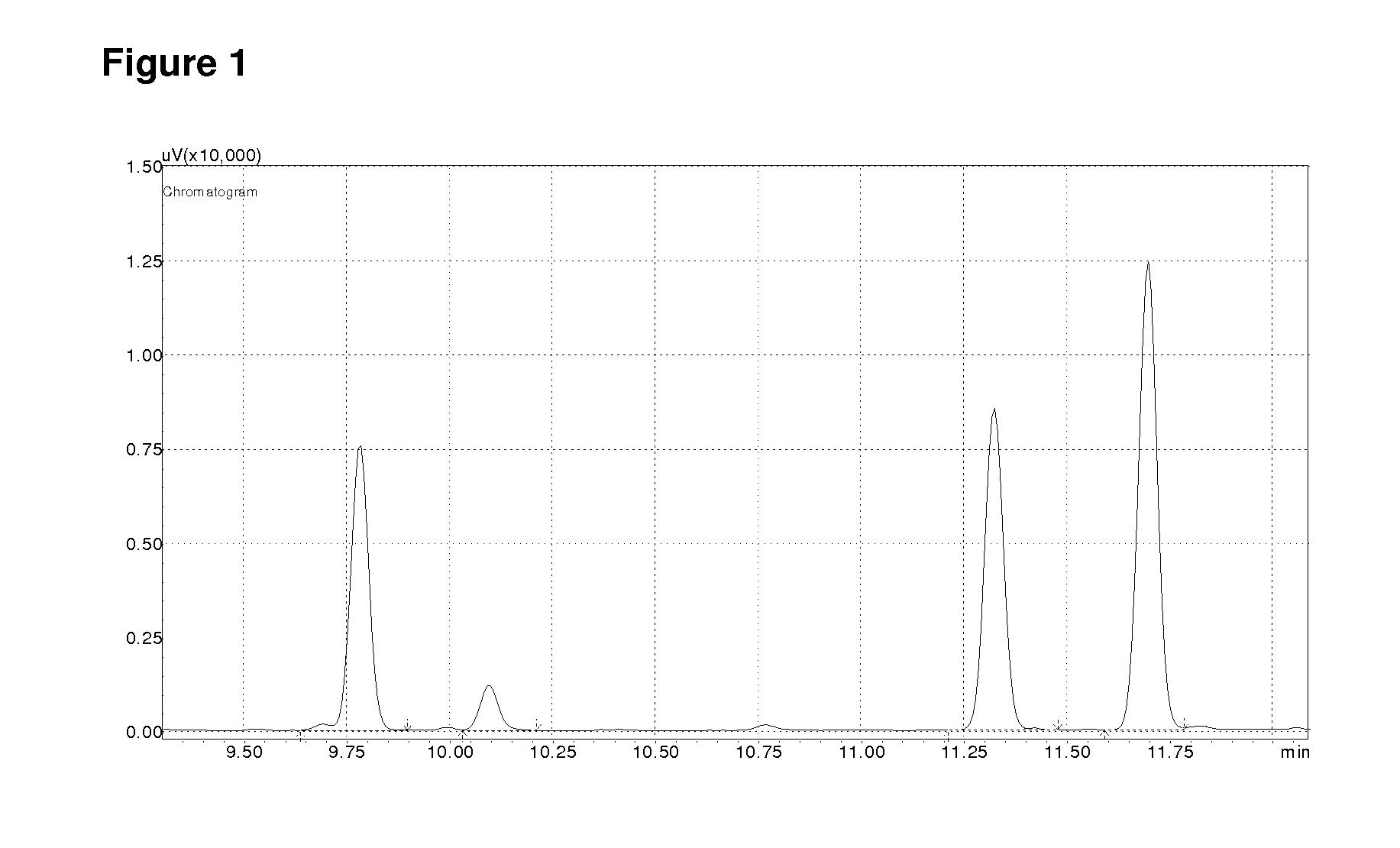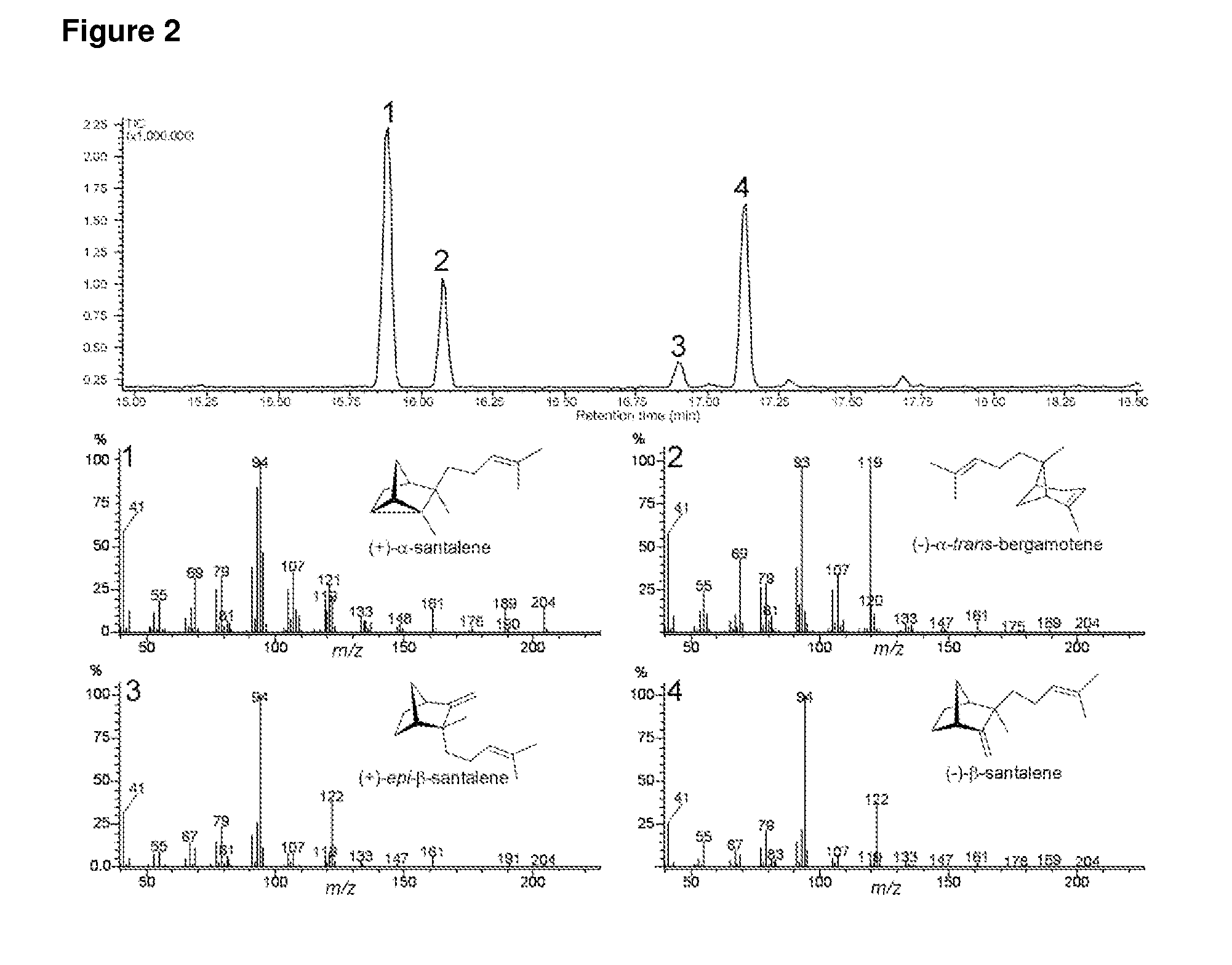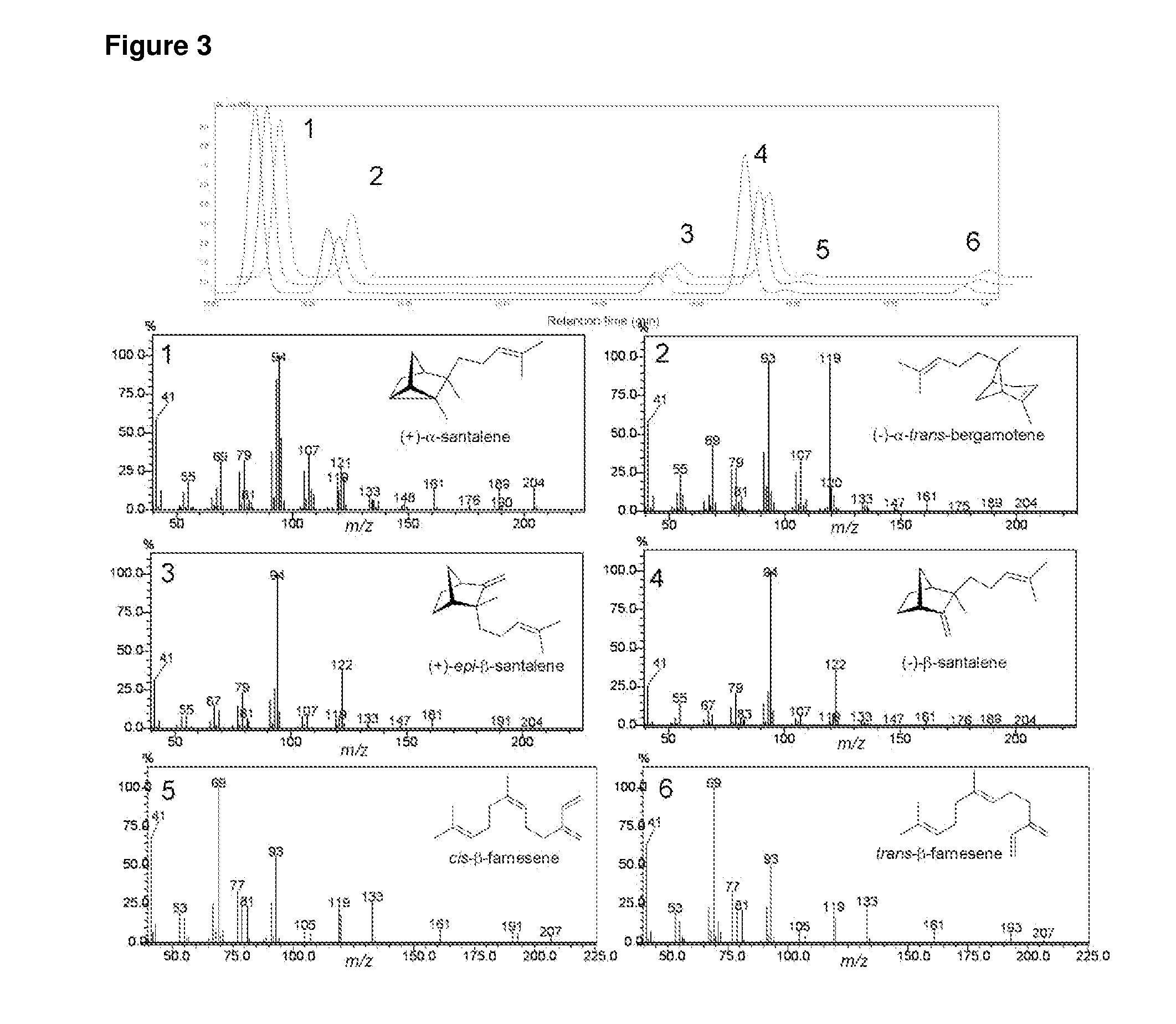Terpene synthases from santalum
a terpene synthase and santalum technology, applied in the field of new products, can solve problems such as the demise of sandalwood in natural stands
- Summary
- Abstract
- Description
- Claims
- Application Information
AI Technical Summary
Problems solved by technology
Method used
Image
Examples
example 1
Plant Material Collection and RNA Extraction
[0318]Several holes were drilled into one mature Santalum album tree growing in the FPC Kununurra arboreturn, Kununurra, Wash. Wood shavings from the transition zone of the xylem were collected and frozen immediately in liquid nitrogen and transported to UWA, Perth.
[0319]RNA was extracted using a modified protocol [Kolosova N., et al., Isolation of high-quality RNA from gymnosperm and angiosperm trees. BioTechniques 36 (2004) 821-824]. Wood shavings (50 g) were ground in liquid nitrogen and added to RNA extraction buffer (200 mM Tris-HCl, pH 8.5, 1.5% lithium dodecyl sulphate, 300 mM LiCl, 10 mM EDTA, 1% w / v sodium deoxycholate, 1% w / v Tergitol Nonidet® P-40). 5 mM Thiourea, 1 mM aurintricarboxylic acid, 10 mM dithiothreitol, and 2% (w / v) polyvinylpolypyrrolidone (PVPP) were added just prior to use. All solutions were prepared from DEPC treated and / or autoclaved water. Several tubes were combined at the TE / NaCl resuspension step to concent...
example 2
cDNA Synthesis and Library Construction
[0320]1.4 μg of S. album xylem total RNA was reverse transcribed with SuperScript III reverse transcriptase (Invitrogen) at 42° C. for 1 hour using the Clontech oligo dT primer and SMART 5′ oligo. cDNA was amplified using the M1 primer supplied in the kit.
[0321]The amplified cDNA was then digested with Sfi1 restriction enzyme (New England Biolabs). The resulting mixture was passed through a Chromaspin size exclusion column, eluting the largest sized fragments first. cDNA was collected in 200 ml aliquots and those which had the desired high molecular weight range were combined and eluted on a Qiagen MinElute spin column.
[0322]The digested cDNA fragments were then cloned into pre-cut pDNR-LIB vector and transformed by electroporation into 25 μl of phage resistant electrocompetent E. coli cells. The cells were shaken at 37° C. for 1 h in SOC media before being mixed with glycerol and stored at −80° C. Aliquots were plated onto agar containing chlo...
example 3
Identification of Terpene Synthase Genes from an S. Album Xylem EST Library
[0323]Reads were assembled using the CAP3 program with default settings. The EST library was compared by BLAST searching to the NCBI database for genes homologous to previously published terpene synthase (TPS) and cytochrome P450 gene sequences. Several candidate genes were identified, including one full length gene with modest identity to limonene synthase from Ricinus communis and linalool synthase Backhousia citriodora. About 12 putative cytochrome P450 oxidase enzymes were also discovered, some of which were full length.
PUM
| Property | Measurement | Unit |
|---|---|---|
| Fraction | aaaaa | aaaaa |
| Fraction | aaaaa | aaaaa |
| Fraction | aaaaa | aaaaa |
Abstract
Description
Claims
Application Information
 Login to View More
Login to View More - R&D
- Intellectual Property
- Life Sciences
- Materials
- Tech Scout
- Unparalleled Data Quality
- Higher Quality Content
- 60% Fewer Hallucinations
Browse by: Latest US Patents, China's latest patents, Technical Efficacy Thesaurus, Application Domain, Technology Topic, Popular Technical Reports.
© 2025 PatSnap. All rights reserved.Legal|Privacy policy|Modern Slavery Act Transparency Statement|Sitemap|About US| Contact US: help@patsnap.com



